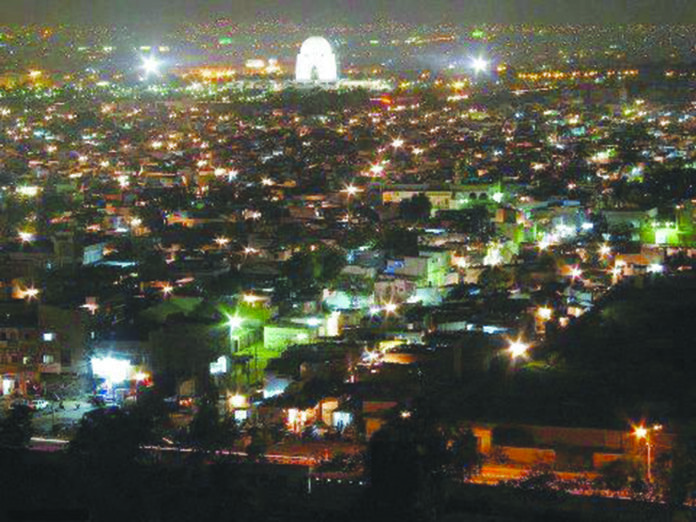Karachi, once known as the “City of Lights,” was a beacon of prosperity and progress. The bustling metropolis of today was, in the not-too-distant past, a clean, organized, and charming city shaped by its British colonial roots. Its wide roads, elegant buildings, and functional infrastructure were the pride of its residents. Yet today, Karachi bears no resemblance to that glorious past. It has degenerated into a city marred by pollution, unchecked urbanization, and social decay. What happened to this city? How did it go from a thriving hub to a broken, neglected metropolis? More importantly, why does it seem that no one cares?
The British colonial period left a lasting mark on Karachi. The city was strategically developed as a key port and commercial hub. The streets were laid out with precision, wide enough to accommodate future growth, and adorned with trees that kept the city cooler during hot summers. The architecture of that era, seen in buildings like Frere Hall, Empress Market, and the Karachi Port Trust building, showcased the grandeur and planning that went into its development. These landmarks still stand today, though they are mere shadows of their former selves.
The public services during that time were efficient. The drainage system worked, garbage collection was timely, and the streets were regularly cleaned. The water supply was sufficient to meet the needs of a growing population, and the public transport system, though limited, was well-managed. Karachi had an air of cleanliness and discipline. The city was not just functional— it was beautiful.
Fast forward to today, and Karachi is almost unrecognizable. Once known for its cleanliness, it is now one of the most polluted cities in the world. Heaps of garbage lie uncollected in every corner, contributing to the foul stench that pervades the air. The roads are congested with traffic, filled with potholes, and riddled with encroachments. Public spaces are now overrun with illegal settlements and markets. The beauty of the city has been replaced by chaos.
One of the main reasons behind Karachi’s downfall is its unchecked population growth. In the early 2000s Karachi saw a massive influx of migrants from all over the country, and the city was ill-prepared to absorb them. This migration has continued for two decades now, and the population boom put an immense strain on the city’s infrastructure. With over 35 million residents, Karachi now struggles to provide even basic services. The roads, drainage system, and public amenities, which were initially designed for a smaller population, have buckled under the pressure.
The corruption in Karachi’s administration has also played a major role in the city’s decline. Funds meant for the development and maintenance of the city have been siphoned off, leaving critical infrastructure projects incomplete or substandard. Politicians and local leaders have used the city’s resources for their own gain, leaving the common citizens to suffer the consequences. The absence of accountability has fostered a culture of neglect, where basic civic responsibilities like garbage collection, road maintenance, and drainage upkeep are ignored.
Mismanagement has intensified these problems. With different political parties controlling various sections of the city, there is a constant power struggle. This has resulted in a lack of coordination between different administrative bodies. Each blames the other for the city’s problems, and as a result, nothing gets done. Karachi, it seems, is caught in the middle of a political tug-of-war, and the city’s development is the last thing on anyone’s mind.
Perhaps the most troubling aspect of Karachi’s decline is the apathy that has set in. The citizens themselves have grown indifferent. People have become accustomed to living in filth and chaos, and there seems to be no collective will to demand change. Protests and demands for better services are sporadic and often fall on deaf ears. In a city where the basic amenities are failing, the everyday struggles for water, electricity, and safety have overshadowed the broader conversation about the city’s long-term future.
Another major issue is the environmental degradation that has gone unchecked for decades. Once lined with trees, Karachi’s streets are now barren. The green belts that existed in the British era have been replaced with commercial encroachments and illegal structures. The unregulated industrial expansion has polluted the air and water, making Karachi one of the most environmentally hazardous cities in the world.
Sewage flows openly through many areas, contaminating water sources and spreading diseases. The overflowing garbage dumps not only degrade the environment but also become breeding grounds for mosquitoes and other disease vectors. The citizens of Karachi are living in a toxic environment, and the lack of proper waste management is pushing the city further into ruin.
Karachi’s downfall cannot be attributed to one single entity or group. It is the result of decades of neglect, corruption, and mismanagement. Successive governments, both provincial and federal, have failed to take ownership of the city’s problems. Local government bodies, crippled by political infighting, have been unable to address the most basic needs of Karachi’s residents.
The private sector has also played a part. With no regard for environmental regulations, businesses have expanded into every available space, adding to the congestion and pollution. Real estate developers, in cahoots with corrupt officials, have turned residential areas into commercial zones, further diminishing the quality of life in the city.
Perhaps the most troubling aspect of Karachi’s decline is the apathy that has set in. The citizens themselves have grown indifferent. People have become accustomed to living in filth and chaos, and there seems to be no collective will to demand change. Protests and demands for better services are sporadic and often fall on deaf ears. In a city where the basic amenities are failing, the everyday struggles for water, electricity, and safety have overshadowed the broader conversation about the city’s long-term future.























